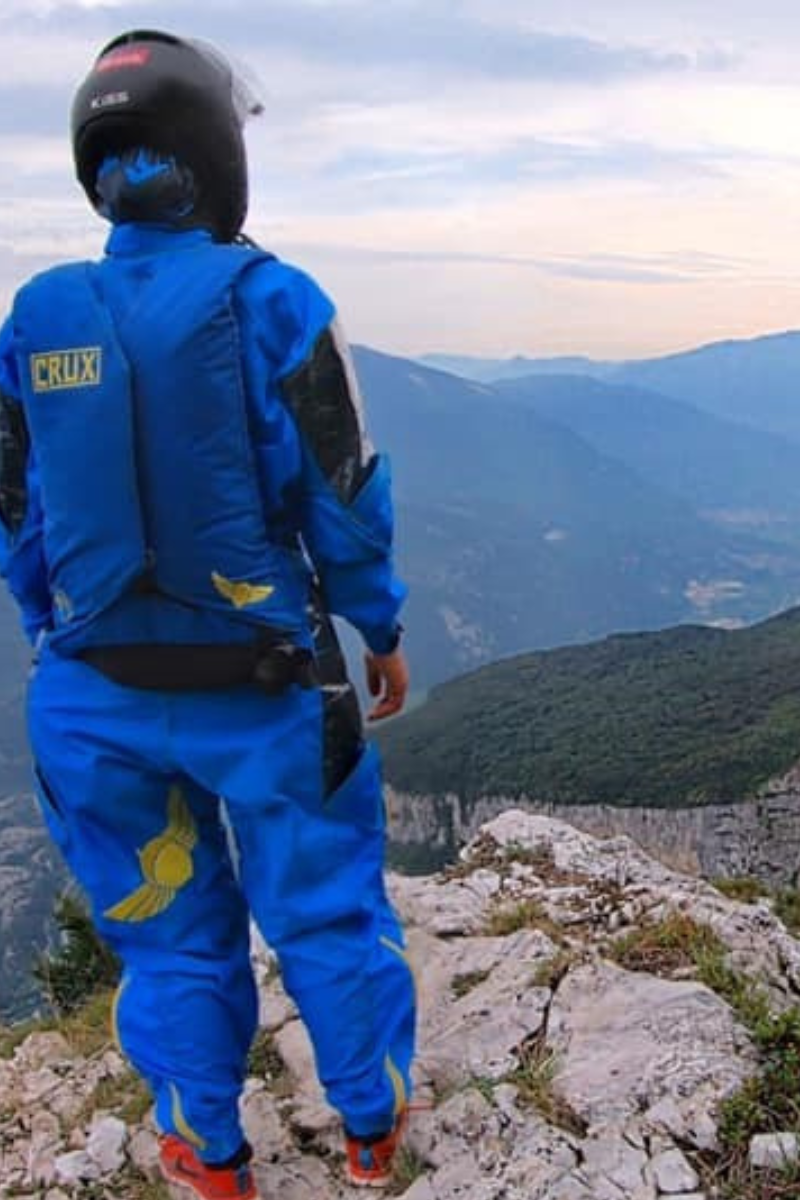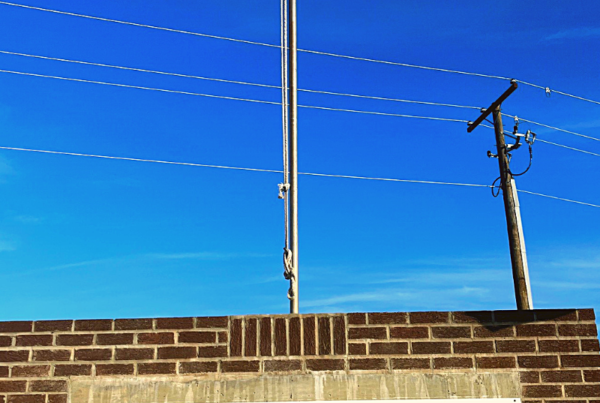TWIN FALLS, Idaho – From a distance, it appears morosely idyllic: figurines collapsing like rag dolls into the azure abyss, hurling toward the gushing stream below until color bursts from above, the parachutes propelling the doll-like frames upright for a gentle float back to the earth.
I move closer, observing the cast of characters with bulging backpacks that make up the elusive world of BASE jumpers – the students and the masters, the intellectual and the intensely free-spirited, and the awe-struck audience that hail from far and wide to watch the spectacle that is Idaho’s 486-foot Perrine Bridge.
After all, this is the only place in the United States of America where BASE – an acronym for buildings, antennas, spans, and the earth – jumping is legal all year round and the storied spot where daredevil Evil Knievel underwent many heart-palpitating stunts. (BASE jumping itself is legal, but most people get in trouble for trespassing under private and public codes.)
It is arguably the most dangerous sport known to man. Yet, it is as paradoxically peaceful as it is adrenalin-fueling. It fulfills Peter Pan-esque fantasies of flying, amplified by the knowledge that demise lurks around it like a shadow in the wind.
For some American military veterans, this effusive brush with death keeps them alive.
Among the many tattooed and wild-haired jumpers, one tall, muscular man with a mud-caked face and primitive shock of sun-kissed straw curls stands out: I learn this former soldier goes simply by Nomad. That is his real name, Damon, spelled backward.

He made his first jump on his 50th Birthday, around six years ago, in the non-recommended manner of “death camping.”
“I’m pretty stubborn. So, I just got a rig and went for it,” Nomad says with a nonchalant shrug. “My training is just life. I’ve never really had anyone showing me the ropes. So, I bought a rig and just started jumping.”
Taking that leap, plunging off the edge with nothing to lose, gave him renewed energy to push through and to overcome a life ridden with childhood sexual abuse, trauma, and addiction. The road to this point was a long one.
The U.S. Army veteran was raised by a teen, largely absent mother on the roughened, hedonistic streets of Northern California. He was a tough-shelled child with obsessive tendencies, a survival instinct, and a will to do something more than run perpendicular to the law.
Lost and looking for adventure and purpose, Nomad joined the U.S. Army at 17, marking a personal quest to instill some discipline into his chaotic existence. Still, life in uniform brought a slew of fist fights and discontentment. Nomad admits he eventually got out, went crazy for a while, and descended deeper into a hole of depression and drinking.
But despite that dark and unraveling chapter, he found some sanity in alpine climbing and later BASE.
“It is my medicine to clear my fucking head,” Nomad continues. “I’ve been doing it pretty much every day since 2018.”
From the outset, he appears larger than life – a body stuffed with titanium and screws from countless brushes with death from BASE and climbing up raw rock faces across the country. Yet as I come to know Nomad a little more, it’s clear that he’s a big-hearted man with a thorny history and a treasure trove of wisdom.
“Let it go, all the shit you carry. We’ve all got to let go of the ego and live. Face the demons,” Nomad, bare-chested and in clanged-up climbing shoes, advises new jumpers clenching the rail above the Idaho gorge. “Demons are cowards; leap and just leave them there.”
Nomad stresses again that braggadocio has no place in the fringe BASE world.
“It forces you to deal with your shit every day,” he continues. “To live right here, right now.”
BASE jumping remains a mostly do-it-yourself avocation. Etiquette standards emerge from agreements within the community, but any rules are loose at best. They probe topographies worldwide for stimulating ledges and faces, assessing difficulty levels, sharing tidbits on cave crevices to surge through, and spitting into the air to gauge wind speeds. Calloused, robust fingers are also a BASE jumper’s crucial instrument. A strong pull or a quick cutaway that can make or break life on earth.
And while Nomad flew into the sport the unconventional way, and there is no formal certification required to hurl oneself from a fixed rim, an aspiring BASE jumper should get at least two hundred skydives under their wing before partaking in a beginner course.
“This shows an understanding and a level of commitment,” notes John McEvoy, 37, the owner of BASE Gear and an instructor in Twin Falls.
The more time I spend in this close-knit BASE community, rife with rebels and misfits, the more I understand the charm of vaulting avidly into the elements, especially for veterans: it’s the closest counterpart to the fantasy of human flight while simultaneously running up against mortality and sometimes, society’s rules.
“What floor is your apartment?” a jumper once asked me when I still lived in the heart of Manhattan. If it was twenty-five or above (it wasn’t), he planned to make a dive from my fire escape just for fun. Over dinner, I heard stories of men bailing on dates via open windows to the shock and fright of confused romantic prospects.
Originally called parachute jumping, the extreme sport emerged from skydiving in the 1960s. Later, in the 1970s, filmmaker Carl Boenish and his wife Jean conceived the acronym. Using ram-air parachutes and the freefall tracking approach, Carl was the first to film such activity in Yosemite National Park, considered the birthplace of the barbaric new activity. BASE was allowed in the distinguished park for a brief period in the 1980s before becoming outlawed again, with authorities citing the unruly conduct of the free fallers.
Even on one frigid early morning in the thick of an Idaho winter, when dense powder coated the voluptuous landscape, jumpers somersault into the void for what seems like an eternity before a flare of chromaticity bursts out above them. In contrast to skydiving, there is no reserve chute to pull, and the lower one jumps from, the riskier it is, since there is very little time to ensure deployment.
Since BASE jumps usually involve slower airspeeds than typical skydives (due to the limited altitude), a BASE jumper rarely reaches terminal velocity. Higher airspeeds enable jumpers to control their bodies more aerodynamically and open their parachute more quickly and confidently, the longer the delay, the better the gratification.
I try a rare tandem BASE jump in the middle of summer, strapped to the back of legendary jumper Sean Chuma. It is markedly different from any skydive or bungee jump I have endured before: more reckless, more terrifying, and ultimately a lot more adrenalin-inducing. The high lingers in my veins for days after, most of it stemming from the sweaty memory of climbing over the rail onto a fragile wooden board.
Indeed, getting over the thin metallic bar is the most heart-pounding part.
The risk versus reward is not lost on me. Virtuosity and ability are key tenants of the adventure, but humility is also paramount. Regardless of the level of experience, it is a sport that kills blindly.
One of the most confronting aspects of the many beginners’ courses is having students write their “death letters.”
“It usually says something along the lines of ‘my name is John McEvoy, and I have died BASE jumping. If you are reading this letter, it means I have died, and it is nobody’s fault but my own,” John tells me. “Then we encourage them to include a personal message to their family. We keep these in case something happens.”
As of the summer of 2022, the BASE Fatality List (BFL) – an informal log of BASE fatalities that goes as far back as 1981 – hovers at more than 430, spanning dozens of ages and nationalities. Cause of death varies – from “unable to pull” or “low pull” to “canopy entanglement,” “impact subterminal (near exit), “canopy collision,” “drowning,” or even “skydive gear used” – a big no, no.
Death in BASE is termed “going in,” and it comes with a 1 in 2300 chance of dying, according to the U.K-based health journal Bandolier. In comparison, hang gliding has a 1 in 116,000 risk of death, and skydiving has a 1 in 101,083 chance of dying.
“I almost went in two days ago; I’ll tell you about it real fucking quick,” Nomad explains casually in a video message to me one sunny June morning. “I was in a bad mood. The parachute, I don’t know, something happened, and it didn’t want to open. It opened about forty feet above impact. I was facing the ledge, grabbed my toggle and yanked it down. There was a little green patch with boulders, and I just bounced into that, so it turned out well.”
That isn’t the case for many. The jumpers I speak with haven’t just lost one or two companions; they’ve lost many. In some cases, half their class; it’s a community fueled by passion and loss. There is no room for error, and jumpers must embrace the paradox that to master life, one must dance with death.
For many veterans, that concept is all too familiar.
Donny Rebman, a 39-year-old former Navy SEAL, learned to BASE jump in 2013 after retiring. It was all part of a pursuit to find something with a little more edge to it than the humdrum of skydiving.
“I wanted to push myself and do something that I’ve always wanted to do,” he surmises. “I remember seeing it (BASE) for the first time in a ‘Mission Impossible’ movie. Tom Cruise’s character blew a hole in the side of the building, and he ran and jumped out the side of the building with a parachute. That is what set me off.”
Indeed, BASE has become a staple feature in modern-day action movies, from Vin Diesel’s 2002 XXX, where his character slings off a bridge in an open-roof vehicle, to Pierce Brosnan as James Bond in “Die Another Day” catapulting from a melting iceberg to Angelina Jolie’s embodiment of Lara Croft soaring from a Hong Kong tower in a wingsuit.
Nevertheless, in Donny’s almost decade of jumping – several broken bones later – the sport has become more than a Hollywood-inspired party trick. It’s a religion, a community, a saving grace.
“I think it was a little easier for me at the time because I was working as a contractor overseas, so it was used to a more of a warzone environment and coming home, I was still very switched on. So having a military background definitely helped,” he says of his training and early jumping days. “It was a little easier for me to have that training mindset, understanding the points of performance that I need to concentrate on. And I still have that mindset when I jump. I don’t get super excited until after the jumps are over, and then I am right in.”
Donny pauses for a moment when I ask if he still gets the same rush, thousands of jumps later and now an instructor himself.
“I feel like it’s a lot more enjoyable now because I have gone through my learning, my growing phase of getting injured and being much more reckless than I am now,” he finally concludes. “So, having the skill and the experience under me allows me to enjoy the sport.”
I’m fascinated by the inwardness, the intense focus – perfect packing, body position, the ability to count split seconds that can feel like hours as the earth rises into your face. But, perhaps most of all, I am in awe of the ability to have so much trust in oneself and in the moment not to stuff up. Only this is a typical practice for every jumper, the highly skilled and the brand new.
I hang on to every tale, told casually around a fire: canvassing rarely trodden parcels of the planet, forging bonds in faraway snow caves and mountains and towering buildings in the middle of cosmopolitan cities, transfixed on the deep magnetism of new places and heights. Jumpers seem to never stop training, even though there is often nothing specific that they are training for – other than life.
Beyond becoming a means of self-healing and therapy, some in the BASE arena are pulling the sport out of the counter-culture shadows to bring awareness to the alarmingly high rates of veteran suicide.
On Memorial Day weekend, scores of veterans and active-duty military personnel amassed on the imposing Perrine Bridge for the annual 22 BASE jumps event, raising awareness of the searing statistic that roughly 22 American veterans take their own lives every day while simultaneously raising funds for the “22 Jumps” charity, dedicated to veteran suicide prevention and Traumatic Brain Injury (TBI) research.
I wander through the drop zone below the bridge, gazing up at the high shimmering ledge and vast peaks – every buttress and couloir feels lathered with stories, the ghosts of those etched into collective memory.
As long as there are edges to be had, jumpers will never stop seeking them. The ending is always unpredictable, at least to my novice lens, until moments after they touch down.
“Dedicated to the men and women in our Armed Forces fighting so we can be free to do what we love. Even if that means ‘Jumping off a bridge,’” reads the plaque, bored into the earth alongside an American flag. “Donated by local Twin Falls BASE Jumpers.”






